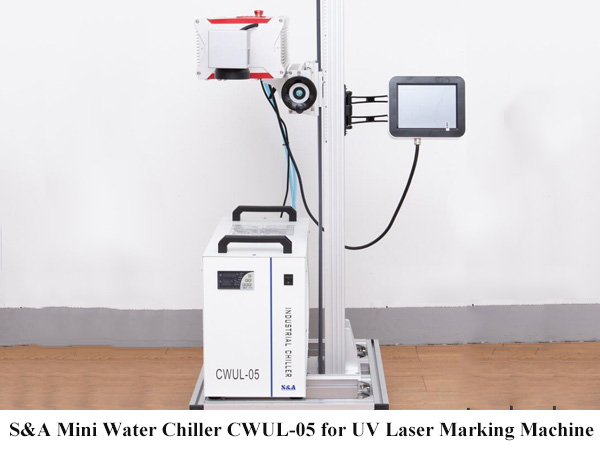
Laser marking machine can be categorized into CO2 laser marking machine, UV laser marking machine, diode laser marking machine, fiber laser marking machine and YAG laser marking machine. Unlike most of the laser applications like laser cutting and laser welding, laser marking machine is more suitable for application which demands higher precision and higher delicacy. Therefore, you can always see the trace of laser marking in electronic components, IC, home appliance, smart phone, hardware, precision equipment, glasses, jewelry, plastic pad, PVC tube and so on.
To bring the heat away from laser marking machine, water cooling or air cooling could be both applicable. So which one is better for laser marking machine?
Well, first of all, we should know that either water cooling or air cooling serves to provide efficient cooling so that the laser marking machine can work in a normal state. Air cooling is suitable for cooling small laser power, since the cooling ability is limited and the temperature can not be adjusted. As for water cooling, it is suitable for cooling higher laser power with lower noise and the ability to regulate the temperature.
Therefore, whether to use water cooling or air cooling depends on the power of the laser marking machine. For example, for diode laser marking machine, the power is generally quite big, so it often uses water cooling. For small power CO2 laser marking machine, air cooling would be sufficient. But for higher one, water cooling would be more ideal. Generally speaking, the specification of the laser marking machine will indicate the cooling method, so users won’t have to worry about that.
There are also something to be reminded during running the laser marking machine:
1.For laser marking machine that uses water cooling, never run the machine without water inside, for it is very possible that the machine will break down;
2.Either air cooling or water cooling, laser marking machine, it is a good habit to remove the dust from the water tank or the fan periodically. This could help guarantee the normal working of the laser marking machine.
For water cooling to laser marking machine, we often refer it to industrial cooling water chiller which allows for effective temperature control. S&A Teyu is an enterprise that designs, develops, manufactures industrial cooling water chiller which is applicable to cool various kinds of laser marking machines. The recirculating laser cooling chiller system comes with reliable water pump and intelligent temperature controller which allows automatic temperature control. The cooling capacity of the chiller can be up to 30KW and the temperature stability can be up to ±0.1℃. Find out your ideal industrial cooling water chiller at https://www.chillermanual.net











































































































